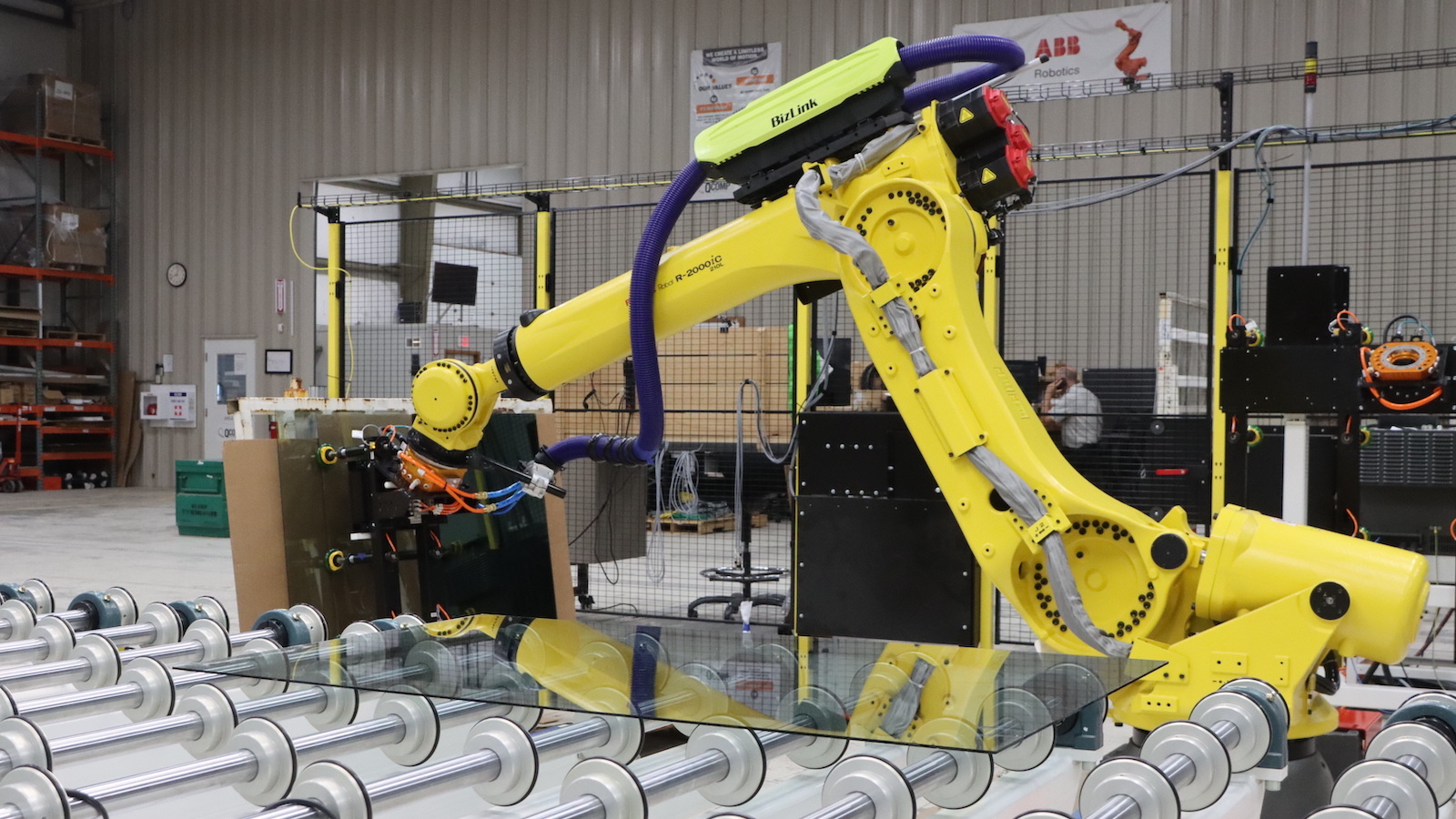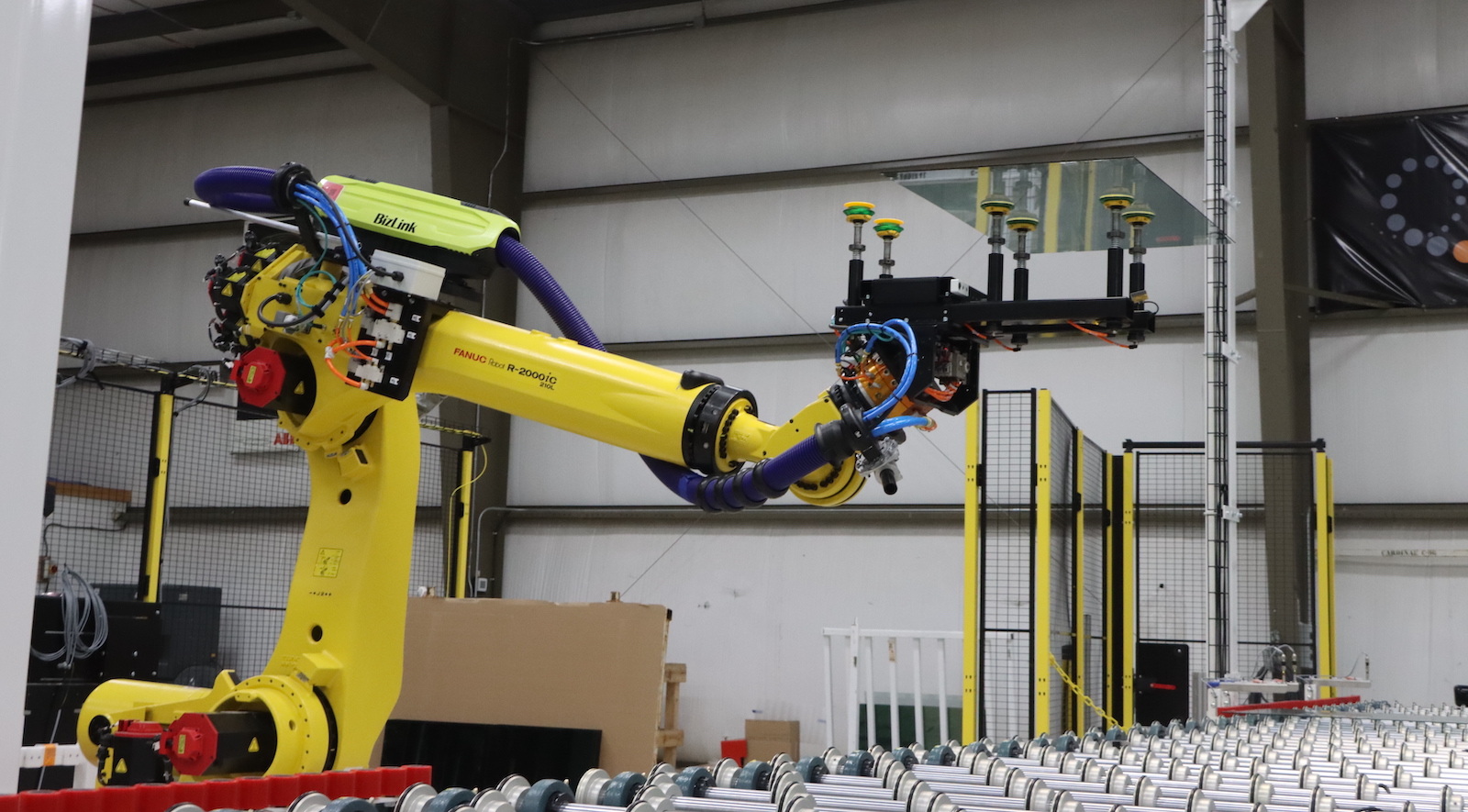Improving Glass Industry Safety: How Automation Helps Prevent Injuries
Sure, robotics and automation increase throughput and help ease labor shortages. But one of the greatest benefits of automation is its ability to reduce safety risks.
This is especially true in the glass manufacturing industry. Whether working with large sheets of glass for solar panels and skyscrapers or smaller pieces for stove tops or cell phones, glass handling comes with inherent risks.
RELATED: Glass Industry Robotic Solutions
The State of Glass Handling Safety
While numbers have declined over the years, there were still 3.6 recordable nonfatal injuries per 100 workers in the glass and glass product manufacturing industry in 2022. At nearly 4%, those numbers are higher than those recorded in the chemical manufacturing and construction industries.
Besides the obvious risks of cuts and lacerations from sharp edges, glass can produce large shards if cracked or broken, especially if it isn’t tempered. That’s why many operators wear full Kevlar suits, including gloves, leggings, helmets, and more. The weight of large sheets of glass — up to half a ton — also poses ergonomic risks, requiring assisted lifts and multiple people to move them.
All that to say, there’s room for improvement. In addition to proper training and personal protective equipment (PPE), automation can play a significant role in enhancing worker safety in the glass industry.
Challenges of Glass Handling Automation
Designing end-of-arm tooling to handle flat glass might seem straightforward. Because glass is nonporous, vacuum grippers can be used to pick and place. However, a lot of engineering goes into designing the tooling to ensure it has the right amount of vacuum commensurate with the size and thickness of the glass. Too little force and the robot could lose its grip, sending an 8x12-foot piece of thick glass crashing to the shop floor. Too much and it could damage or crack the glass, especially when handling delicate units that might only be .8mm thick, like those used for cell phones.
Another major challenge is when the glass comes off a production line at random sizes and needs to be picked and placed into a protective slotted rack for shipping. In addition to identifying the size and thickness, a robotic arm needs to accommodate for potential static between sheets of glass that can make them stick together and topple, creating a domino effect that could be disastrous.
QComp uses a combination of lasers and cameras to identify various sizes, thicknesses, and planes that guide the robotic arm and tooling to place a single piece of glass into a designated slot with speed and precision. We developed such a solution for a major glass manufacturer and have implemented more than 30 robotic cells in various facilities. These auto-pack cells can eliminate human intervention and associated safety risks, allowing workers to focus on more fulfilling (and safer) tasks.
Automation also improves product quality by overcoming another challenge: picking float glass from the tin side. This is especially important for specialty glass that requires a perfectly clean surface for finishing. Robotic applications attempt to handle glass from the bottom (tin side) with a finger tool that protrudes through the conveyor system. However, aligning these disparate mechanicals can pose major problems, especially when picking glass that is skewed. At QComp, we design not only the robotic arm but also the conveyor system in conjunction with it, allowing for seamless operation. QComp’s vision guidance and glass handling experience ensure quality picking and packing for a flaw-free finish.
RELATED: Automated Flat Glass Handling
Choose an A3-Certified Robotic Integrator
Every glass producer wants to improve safety and achieve zero recordable injuries. Robotic solutions can help achieve that goal, and choosing an integrator who has proven their own commitment to safety is a start.
When vetting your robotic providers, determine whether they are A3-certified. Achieving A3 certification helps prove that they’ve gone the extra mile and take safety seriously, not just in their own facilities, but in yours.
QComp is a pioneer in A3 safety certifications and has continued to demonstrate a commitment to quality and safety through the years. Our focus spans the entire process from development and design to installation and service. Our extensive experience helps us hone a better solution that delivers repeatable results and significant ROI.
Want to explore how we can help you improve safety, quality, and productivity? Contact our team to start a conversation.
Share this
You May Also Like

How Customized Automation Delivers High ROI
Discover how robotic automation drives ROI, improves productivity, and addresses labor challenges in this insightful conversation with QComp experts.

Optimizing Glass Line Load and Unload with Robotic Automation
Robotic glass line load/unload automation improves safety, efficiency, and productivity. Discover robotic solutions to optimize handling in glass manufacturing.

Cable Management in Glass Line Automation: An Overlooked Necessity
Learn how QComp and BizLink tackle cable durability, uptime, and safety challenges in glass robotic automation, redefining efficiency in glass manufacturing lines.
